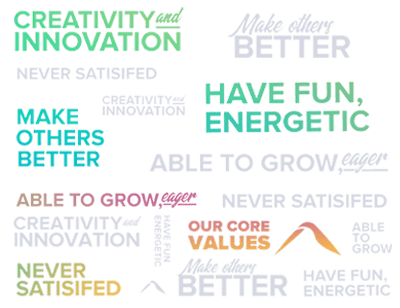Introduction:
The world of work is going through a phase of significant transformation. It has progressed from primarily focusing on scheduling and compliance. With the advent of new technologies and trends, such as automation, hiring based on skills, and hybrid work setups, workforce management has adopted new features like empowerment, anticipation, and adaptability.
The augmented digitization, global economic changes, and concentration on human-centric management are reinventing employees’ expectations and corporations’ offerings.

With the workforce management industry projected to reach $31.44 billion by 2034, up from $10.53 billion in 2024, let’s explore the trends that will shape this industry in the future
1. AI and Automation: The movement from assistants to agents
- The relevance of proactive agents
Agentic AI has brought a shift in the method of response and assistance. Powered with intelligence, it functions autonomously and make necessary decisions. Agentic AI is proficient of scheduling shifts, identifying compliance issues, and starting training when required without human initiation. As per the article” Designing Effective Learning for a Multigenerational Workforce– 77% of employees under 40 and 76% over 40 report low engagement levels, indicating a need for personalized development architectures.
- Harmonizing automation and human partnership
AI in the form of chatbots and predictive scheduling is used by companies to streamline regular workflows. The objective should be to empower workers with AI and not to replace them.
2. Hiring based on Skills, relevance of Upskilling, and Reskilling
- The dominance of Skills over a degree
Skills-based hiring has taken over traditional degree-based recruitment. According to various sources, better results and performance are seen in hires who are recruited based on skills. Similarly, according to the McKinsey Global Institute survey, “How a government agency is preparing workers to thrive in the skills-based economy,”-87% of companies are encountering skill gaps now or anticipate them within five years.
- Training the workforce for tomorrow
Today, as technology evolves daily, it has become essential to learn new things continuously. To fill the knowledge gap, companies are investing in upskilling their employees in AI, data science, and soft skills. In 2024, the ADP research in its report, Most workers think AI will affect their jobs. They disagree on how, mentioned, 85% of workers know AI will impact their jobs within three years
3. Recent Work Models- Hybrid & Flexible
- Hybrid- The new normal
Since the pandemic, the hybrid model of work has prominently come into existence. Research for Robert Half’s latest Salary Guide–Welcome to the 2025 Salary Guide From Robert Half, found that 61% of working professionals mentioned that they are more inclined to apply for a job if there is a prospect to work hybrid. This data clearly gave the impression that remote work enhances retention, boosts productivity, and satisfaction.
- Adjustable scheduling beyond location
A personalized work schedule is desired by employees these days. Dynamic shift changes, work that doesn’t compromise lifestyle requirements, are succeeding in higher retention. As per Gallup’s quarterly survey Indicators Hybrid Work- 65% of remote-capable Gen Z employees expressed they preferred to work in a hybrid environment
4. Well-being, mental health and demography of employees
- Wellness is not just a term-it’s a need
It’s a well proven fact that mental health immensely affects productivity and retention. As per Gallup’s State of the Global Workplace report 50% of workers reported feeling stressed at their jobs every day, and 60% reported being emotionally detached at work.
- Tailored engagement across generations
A workplace with Multigenerational employees needs tailored experiences. With different priorities of Gen Zs and Baby Boomers, companies are deploying AI for benefits, career journeys and training. According to the Harvard Business Review, Harnessing the Power of Age Diversity, companies that actively foster collaboration between diverse age groups report a 15% higher productivity rate and more robust innovation.
5. Data‑Driven Workforce Management & Analytics
- Role of analytics =Operational advantage
Analytics in the workforce helps in augmenting schedules, predicting staff requirements, decreasing nonappearance, and handling labour costs.
- Unifying workforce systems
Data flow gets seamless, and strategic insights are obtained when HR, payroll, performance, and wellness are found on one integrated platform.
6. Human‑Centric Leadership & Culture
- Compassion and empathy
When the monotonous tasks are handled by AI, the leadership is can concentrate their focus on nurturing connection, promoting inclusion and development of staffs.
7. Green Jobs
The green economy is generating extraordinary opportunities for sustainable careers. It is anticipated that in 2025, Green jobs will grow 3X the rate of conventional employment 2025.
As per the Interview guy’s article, The Green Skills Revolution: 15 High-Demand Sustainability Jobs for 2025 (That Pay Well)– sustainability-focused roles are offering 15-25% higher salaries than traditional counterparts.
8. The expansion of Gig and contract work
GIG is a free market system in which temporary positions are common, and companies hire independent workers for short-term commitments. As per the CV guy’s article, ” The Gig Economy’s Impact on Traditional Employment in 2025, ” the global gig economy workforce is anticipated to be over 1.6 billion people by 2025, which is approximately 12% of the world’s labour market.
Final words
The future workforce management is jampacked is with transformation. The technological shift, the emergence of new work models such as hybrid and remote, and a focus on employee well-being are prompting companies to adapt in order to remain relevant. The adoption of these trends will not only help a company survive but also enable it to succeed in a competitive ecosystem. Companies that will have an engaged, productive, and resilient workforce will have an edge.
Frequently Asked Questions About Workforce Management in 2025
1. For workforce management in 2025, why is AI expected to be a crucial force?
The management and optimization of the workforce are expected to undergo significant transformation with the deployment of AI and machine learning. AI will enhance the process of decision-making; predictive analytics will forecast employees’ training needs and will also boost productivity.
2. Will employee well-being have significance in workforce management in the coming years?
In the next few years, mental health and work-life balance will be a significant point of consideration. In order to address multifarious needs, investments will be made in exhaustive wellness programs.
3. What will be the role of diversity and inclusion in workforce management in the future?
Diversity, equity, and inclusion (DEI) will be of paramount importance for workforce management in 2025. Companies will focus on creating an atmosphere where every employee feels appreciated and empowered.
4. In order to prepare themselves for workforce changes, what should the companies do?
To stay ahead in the race, companies should accept that flexibility is the new normal—flexibility in terms of work hours, locations, and job roles. Upskilling, a culture of constant learning, and employee well-being should be part of the plan.
Sources :
Workforce Management Market Size to Attain USD 31.44 Bn by 2034
Designing Effective Learning for a Multigenerational Workforce
How a government agency is preparing workers to thrive in the skills-based economy
Most workers think AI will affect their jobs. They disagree on how.
Welcome to the 2025 Salary Guide From Robert Half,
Indicators Hybrid
State of the Global Workplace
Harnessing the Power of Age Diversity
The Green Skills Revolution: 15 High-Demand Sustainability Jobs for 2025 (That Pay Well)
The Gig Economy’s Impact on Traditional Employment in 2025




